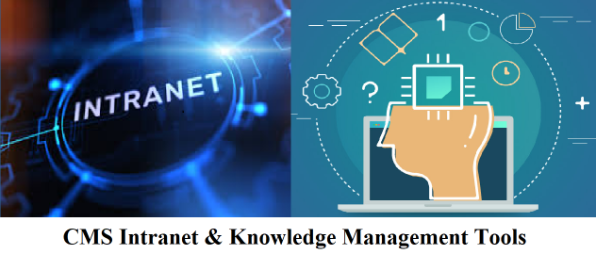Introduction
In today’s fast-paced business environment, efficient management of information and resources is crucial for success. Knowledge Management (KM) plays a pivotal role in this context, helping organizations harness their collective expertise and streamline work processes. By integrating KM tools and a CMS intranet, businesses can enhance productivity, collaboration, and decision-making. This article explores the concept of Knowledge Management and how these tools can revolutionize the way organizations operate.
Understanding Knowledge Management
Knowledge Management is the systematic process of capturing, distributing, and effectively using knowledge within an organization. It involves collecting valuable information, storing it securely, and making it accessible to those who need it. The primary goal of KM is to improve organizational efficiency and innovation by leveraging the collective knowledge of employees.
Effective KM practices ensure that critical information is not lost and that employees can access the knowledge they need to perform their tasks efficiently. This process fosters a culture of continuous learning and improvement, enabling organizations to adapt to changing market conditions and stay competitive.
The Role of KM Tools
KM tools are software applications designed to facilitate the management of knowledge within an organization. These tools help in the collection, organization, storage, and retrieval of information. They come in various forms, including databases, document management systems, and collaborative platforms.
One of the key benefits of using KM tools is that they provide a centralized repository for storing and sharing knowledge. This centralization ensures that employees have easy access to the information they need, reducing the time spent searching for documents or data. Additionally, KM tools often include features like search functionality, tagging, and categorization, which further streamline the process of finding relevant information.
By implementing KM tools, organizations can enhance their knowledge-sharing capabilities, leading to improved collaboration and innovation. For instance, project teams can use these tools to share insights and best practices, ensuring that everyone is on the same page and can contribute effectively to the project’s success.
The Power of a CMS Intranet
A CMS intranet is a powerful tool that can significantly enhance Knowledge Management efforts. CMS stands for Content Management System, and an intranet is a private network accessible only to an organization’s employees. When combined, a CMS intranet allows organizations to manage and share content efficiently within their internal network.
One of the primary advantages of a CMS intranet is its ability to centralize information and make it easily accessible to employees. This centralization ensures that employees can quickly find the documents, policies, and resources they need to perform their tasks. Additionally, a CMS intranet can facilitate collaboration by providing a platform for employees to share knowledge, ideas, and feedback.
By using a CMS intranet, organizations can streamline their communication processes and reduce the risk of information silos. This integration ensures that all employees have access to the same up-to-date information, fostering a more cohesive and informed workforce. Furthermore, a CMS intranet can support the creation of a knowledge-sharing culture, where employees are encouraged to contribute their expertise and learn from one another.
Benefits of Integrating KM Tools and a CMS Intranet
Integrating KM tools with a CMS intranet can provide numerous benefits for organizations. One of the most significant advantages is the enhanced accessibility of information. With a centralized repository of knowledge and easy-to-use search functionalities, employees can quickly find the information they need, leading to improved productivity and efficiency.
Another benefit is the improved collaboration that results from better knowledge sharing. By providing a platform where employees can share insights and best practices, organizations can foster a culture of continuous improvement and innovation. This collaboration can lead to better decision-making and more effective problem-solving, as employees can leverage the collective expertise of the organization.
Moreover, integrating KM tools and a CMS intranet can help organizations maintain consistency in their information. With a centralized system, organizations can ensure that all employees have access to the most current and accurate information, reducing the risk of errors and misunderstandings.
Implementing KM Tools and a CMS Intranet
Implementing KM tools and a CMS intranet requires careful planning and execution. Organizations should start by assessing their current knowledge management practices and identifying areas for improvement. This assessment will help determine the specific KM tools and CMS intranet features that will best meet the organization’s needs.
Once the tools and intranet are selected, organizations should focus on integrating them into their existing workflows and processes. This integration may involve training employees on how to use the new tools and encouraging them to adopt best practices for knowledge sharing and collaboration.
To ensure the success of the implementation, organizations should also establish clear guidelines and policies for using the KM tools and CMS intranet. These guidelines should outline the processes for capturing, storing, and sharing knowledge, as well as the responsibilities of employees in maintaining the system.
Final Thoughts
Knowledge Management is essential for organizations looking to improve efficiency, collaboration, and innovation. By integrating KM tools and a CMS intranet, businesses can streamline their work processes and create a more informed and cohesive workforce. These tools provide a centralized repository for knowledge, enhance accessibility, and foster a culture of continuous learning and improvement. Implementing these technologies requires careful planning and execution, but the benefits they provide can significantly enhance an organization’s ability to adapt and thrive in a competitive environment.




